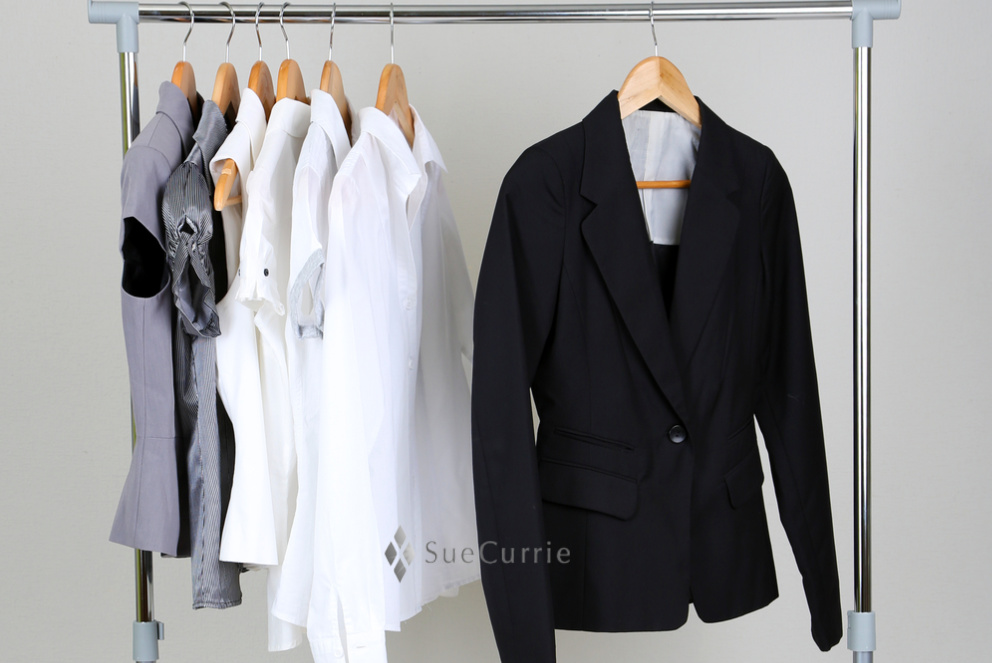Now that most of us are back to work, the age-old question of “what to wear to work?” seems to come up. Particularly now that many of you may be doing a mix of in-office and at home, work. This topic has been the subject of quite a few blogs and articles I have read recently and well, the verdict is out – it depends.

Generally, I think that smart business casual has been the “norm” for a while in the workplace. In the "new normal" as we head back into offices, I don't think it will change too much. The “dress for your day”, code has been in place in many organisations and with it comes a sense of freedom for many employees, yet others and some employers would prefer a look and style that is more on brand and in alignment with clients and customers expectations.
Some people miss going to work and getting dressed in business clothing. Whether you wear a uniform or not, wearing professional clothes portrays a lot more authority. It says, ”I’m dressed, ready for work.” Even if it is up to you and there are no guidelines in place – it is also up to you how you wish to be perceived. Your personal brand is always on show.
One comment I read said, “If I dealt with someone that couldn't care less as to how they looked, what care would they take with the work I give them?” That was a personal opinion and yet another had quite the opposite view.
“I’ve always loved dressing casual. People underestimate you, so it’s funny seeing them impressed with your performance. Plus, I work better when I’m more comfortable, and there’s not a single piece of professional clothing that is as comfortable as casual wear.”
It does also come down to the type of work you do, whether you are client facing or not and the environment you work in. In sub-tropical Queensland you would dress differently at work to what you would wear to a business meeting in Melbourne.
Business dressing everywhere has become more relaxed over the past years. Long gone are the days of very formal, pin striped suiting. Yet some men still do like to wear a suit as it puts them into a different mindset. Ties are not worn nearly as much and pantyhose worn by women has become the exception rather than the norm.
The majority of businesspeople wear smart, business casual and try to appear approachable to their client base. Which is fine if you have young, trendy staff and that is your client base. What if you have young trendy staff and your client base is much older and formal?
It comes down to congruency. There may be times when you or your employees are meeting clients. And that’s where I often come in as an advisor on corporate image and wardrobe for professionals.
On one occasion I was given a brief by a very large financial services organisation. They wanted to address the problem of “too casual” saying that skimpy shoe-string strap tops and wearing thongs to work were quite normal. How could they fix that? I’ve also been asked the question of the appropriateness of wearing Ugg boots to work. Really?
In comments I’ve read it seems that dressing inappropriately does not inspire financial confidence. Too casual clothes looks like you're permanently on holiday and equates to casual attitude.
Whether you or your team are client facing or not it also comes down to leadership style and setting the standard for the workplace which will help everyone to dress appropriately for your customers and clients both internal and external.
Most people do understand what is expected of them, but I still think a good idea is to have a style guide in place. Just like your brand communication collateral style guide, a “visual communication” style code should be suggested when new people are inducted into your business because when everyone (including you) presents themselves in the same manner, you maintain a quality culture.
Remember if your outfit could speak – what would if say about you, your brand and your company?
If you need any assistance with image management or style guidelines, please contact us.
Learn more about 3 Steps to Build a Stand Out Personal Brand in my free video series, NOOK, LOOK, HOOK.
Sue Currie is a speaker and the author of IMPRESSario, Present and Promote the Star Within You. She is recognised as a leading authority on personal branding and professional presence to boost image, profile, brand and business. Sue works with businesses and entrepreneurial professionals to create and communicate impact and influence delivered through workshops, consulting, coaching and keynote presentations.



